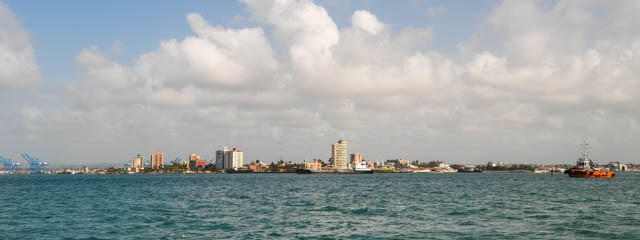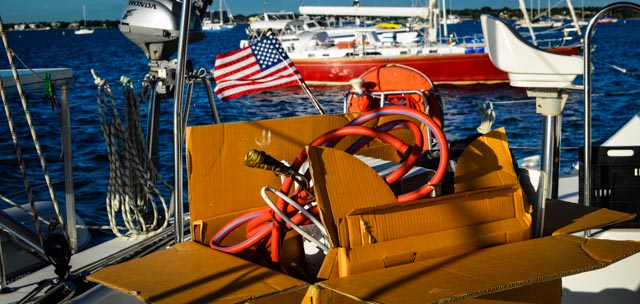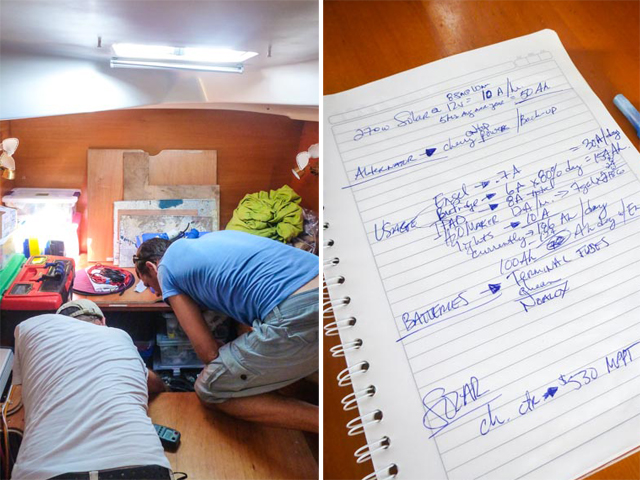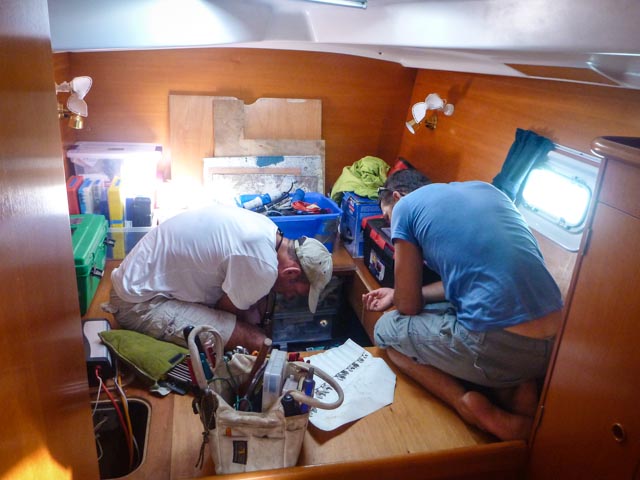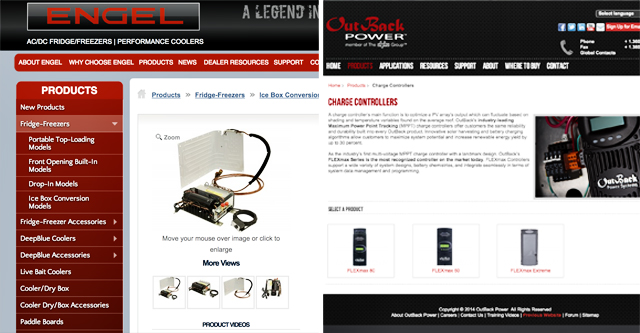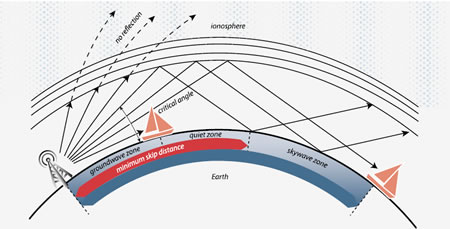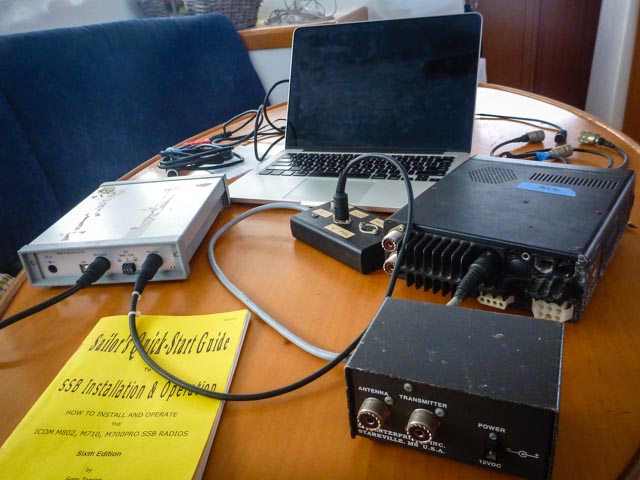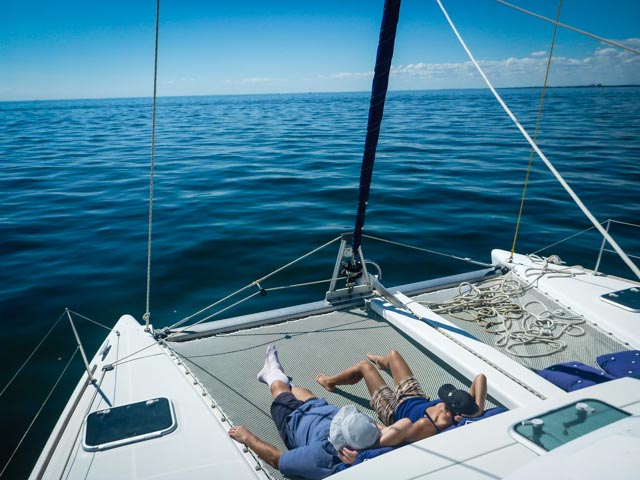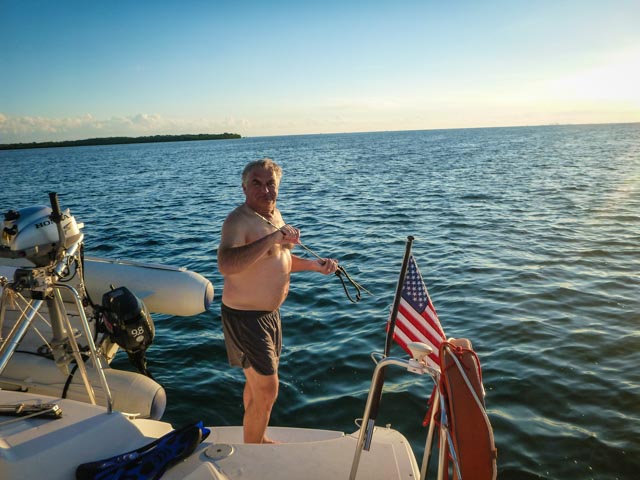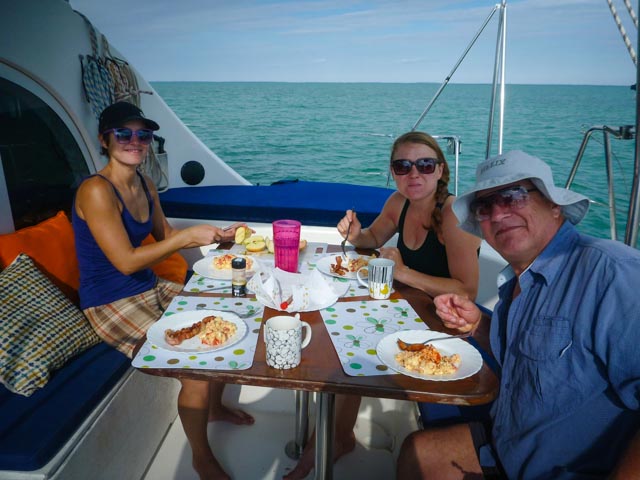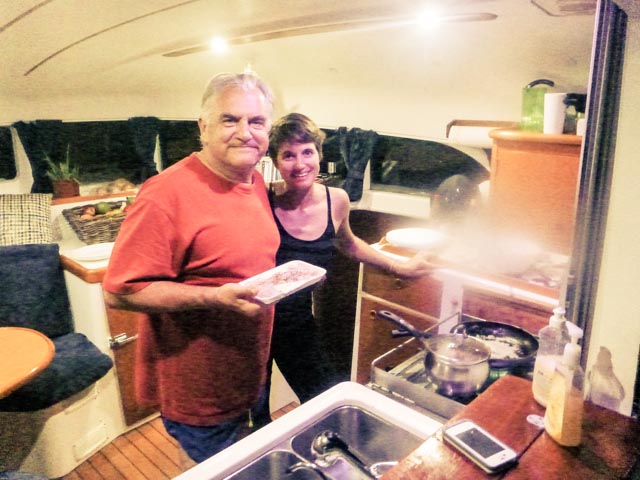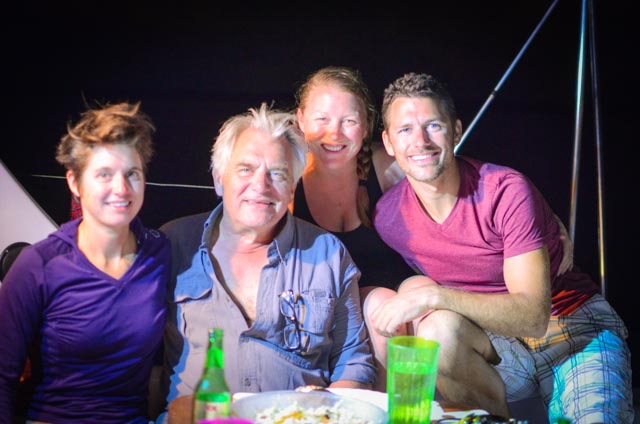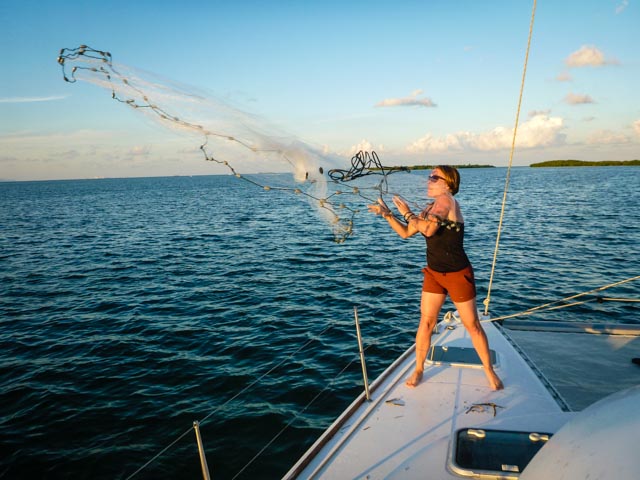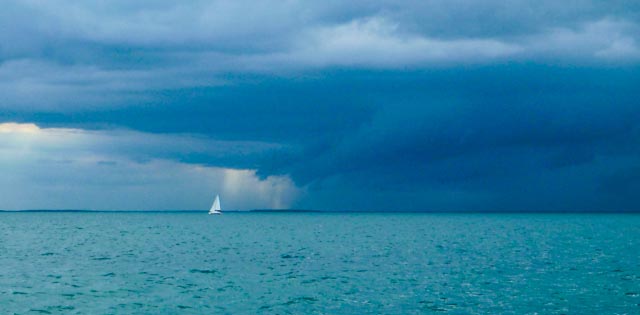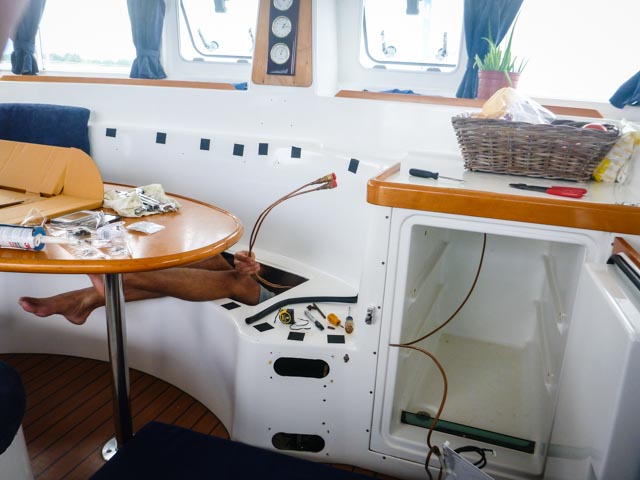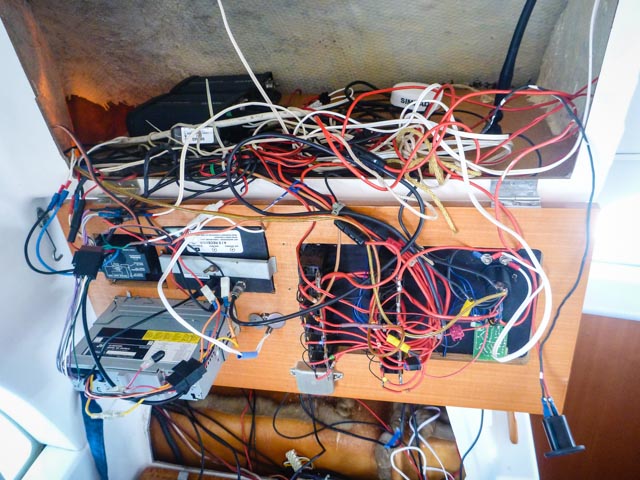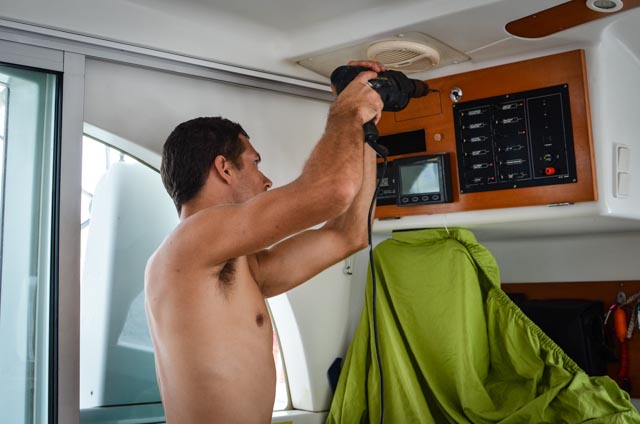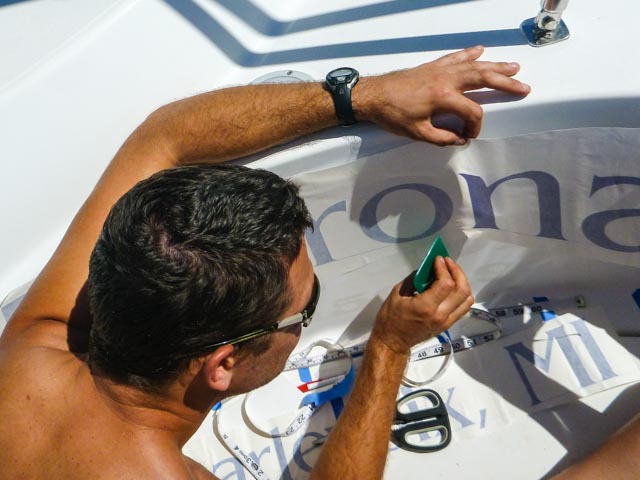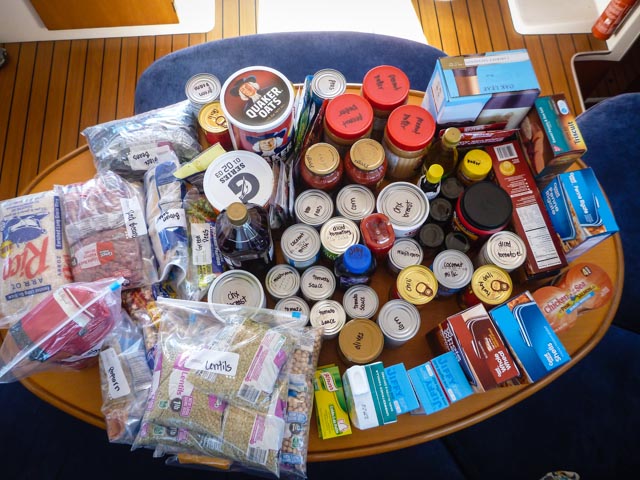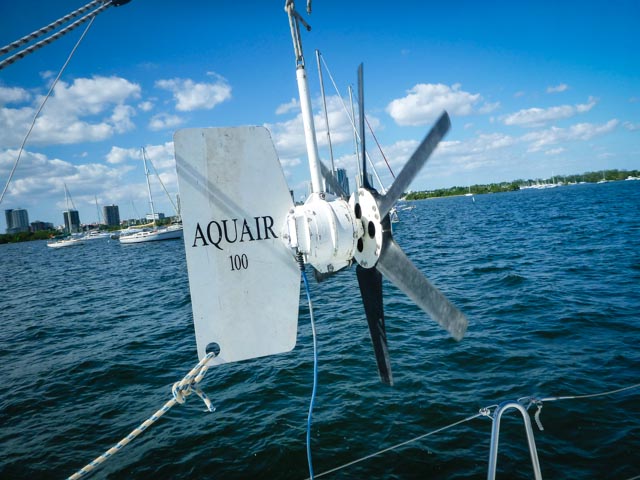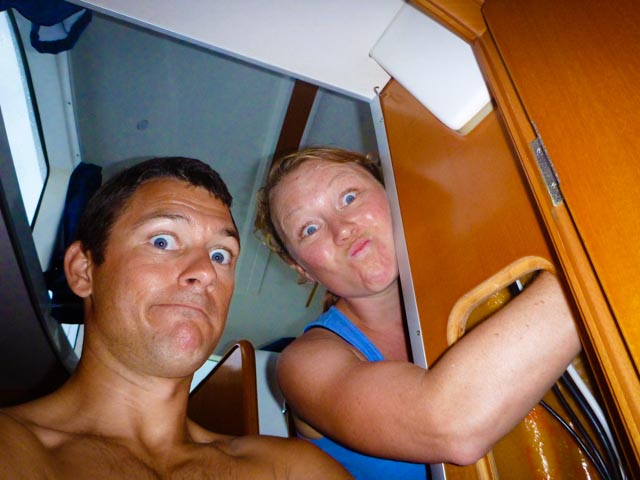Author: Miranda
Remember that saying that all Moms teach their kids? “If you can’t say anything nice, don’t say anything at all?” Well, therefore my feelings on Colon as travel destination will stay pretty short and sweet. We’ve done our best to save money by steering clear of nightly stays docked up at a marina, but while in Colon we decided to stay at Shelter Bay Marina, which is probably as far from Colon while still being able to access the city as possible. It was glorious to be tied up to a dock for a little while.

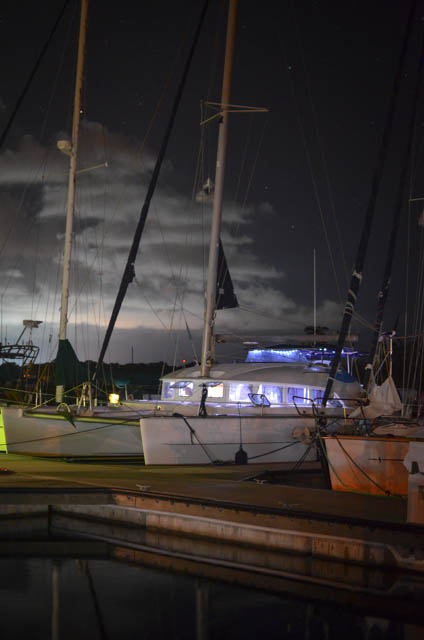
Now, I never felt in danger in Colon and the grocery store was quite large and decently well-stocked, but Colon is the epitome of all those mega-industrial port cities that have much more to worry about than if the visitors are impressed by clean streets, clean air, nightlife, and roads/sidewalks that aren’t riddled with potholes.
But you can’t deny being impressed and awed by the dozens of freighters that line the entrance to the city. The sheer efficiency and engineering that permeates all that surrounds the canal is inspiring and dwarfing at the same time.

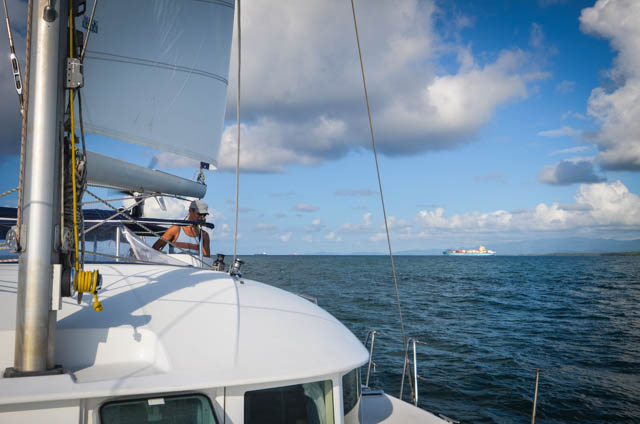
Given the glamorous attractions of Colon, most folks arrive in the city and immediately start their paperwork to head through the canal and get out of dodge as soon as possible. We did the same. Most folks also use an agent to help them navigate the documentation and general rigamarole, but we decided we’d give it a shot on our own. And, I’m glad we did. It’s really not that complicated, and there’s a plethora of information online to walk any would-be do-it-yourselver through the process. Easy-peasy. More or less.
The first step was to organize an official measurement of our boat. While the admeasurer was aboard, he also filled out the many documents the Canal Authority needs and gave us our invoice to be paid at the local Citibank- in cash only, of course.
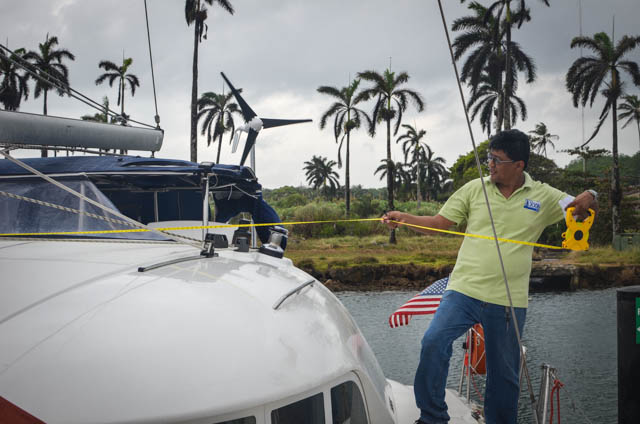
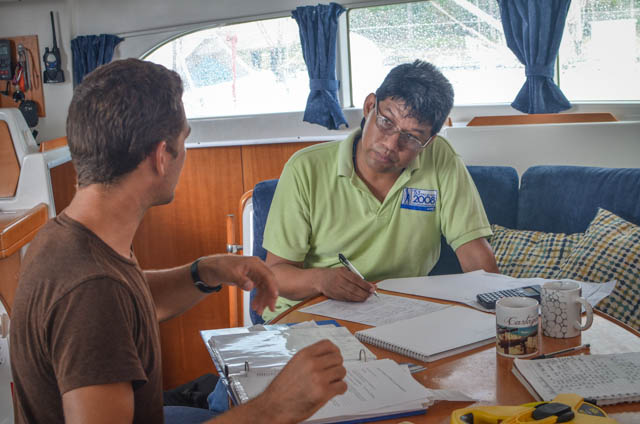
I took our wad of cash to the bank- stuffed and hidden into various locations in my undergarments. Yes, in his infinite maturity, Pete couldn’t help the many stripper jokes that go along with packing your undies with twenties, but I wore the grungiest clothing my closet could afford (which unfortunately affords many options these days) and he mostly shut-up about it.
After they take your money, the Panama Canal Authority assigns you an official date to go through the canal and you’re pretty much set. Our date was about a week out after our payment, so we used the time to work on the boat- imagine that!
Have I told you my favorite line about long distance cruising??
“Circumnavigating is simply fixing your boat in exotic locations.”
Ha! Ain’t that the truth.
So, yes, the to-do list…
We hit it hard and had the yard at Shelter Bay haul out Tayrona. She was in pretty desperate need of a new coat of bottom paint and we needed to replace our rudder bearings, which is best done by pulling the boat out of the water.
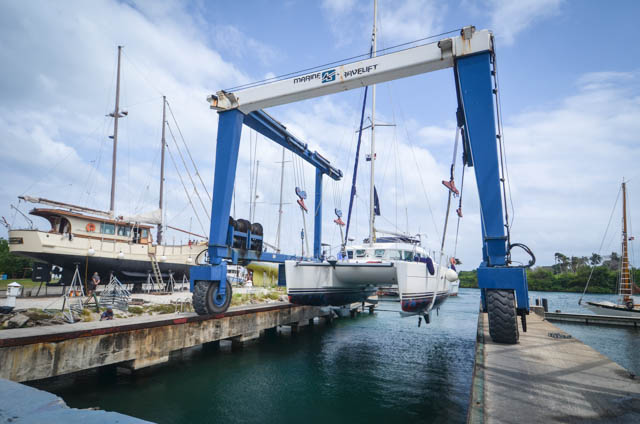
As soon as we had her out of the water, we started scrapping off the barnacles and then sanding off the last paint job. Not a fun job, and we eventually realized that throwing a little money at the issue to make it go faster was well worth it. So, we hired a few of the yard workers for a half day to help us sand down our two hulls.
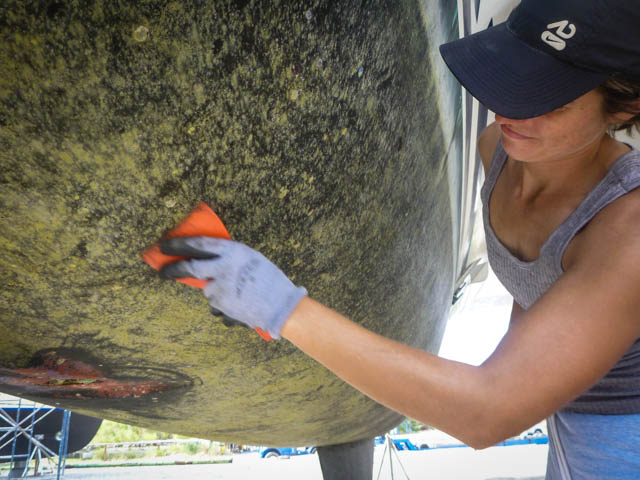
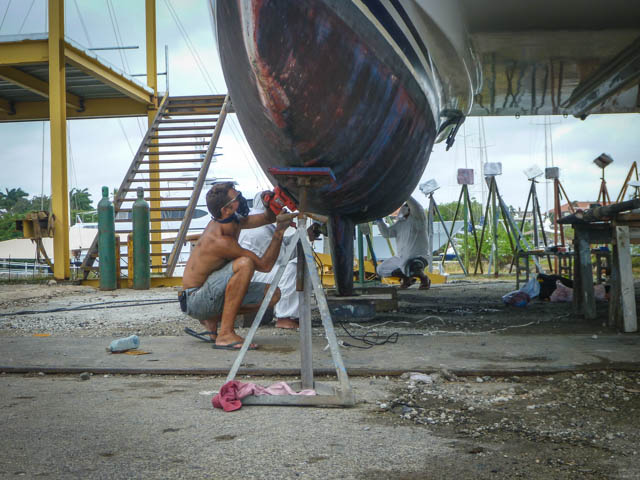
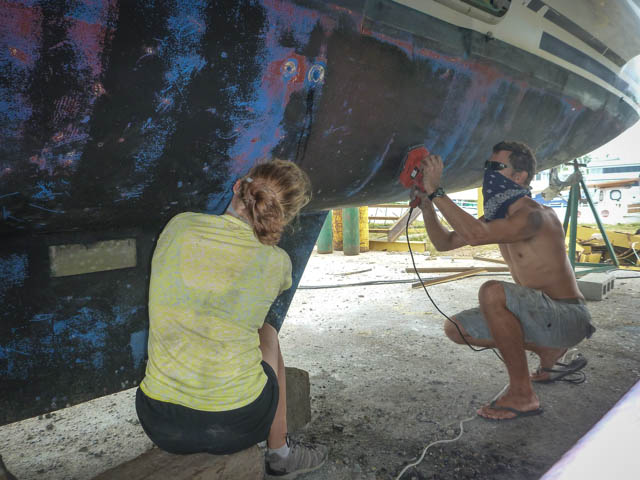
As soon as the first hull was sanded down, we taped her up and started painting, all the while continuing to sand down the second hull. We love our catamaran, but just slightly less when two hulls means twice the work. We were blessed with two free gallons of paint left on the boat by the previous owner, and we were double-blessed to find the exact same paint in Colon from Roberto at Club Nautico.
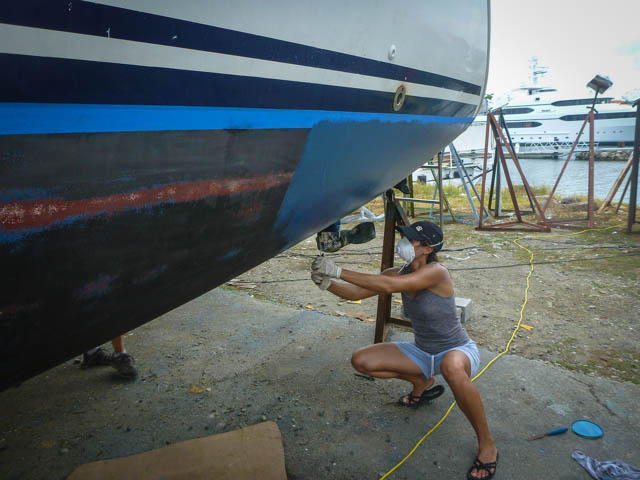
Doesn’t she look pretty?
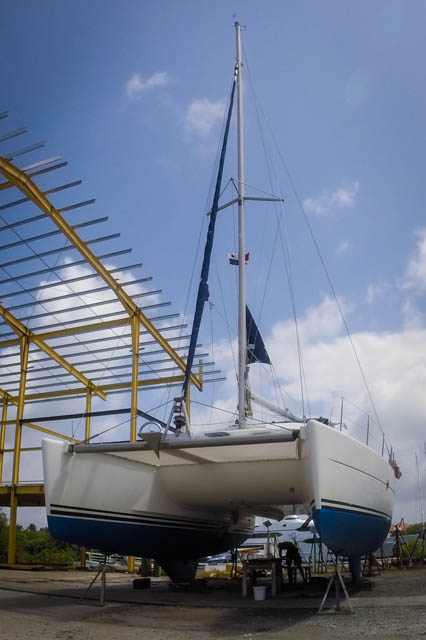
Sleeping on a boat while that boat is on rafters on land is not a fun experience (the whole thing rattles in the wind and your subconscious is always waiting for the entire thing to be blown over), so we were excited to put our baby back in the water.
Motored across the bay to spend a night or two on anchor, which was plenty to take in the sights of Colon.
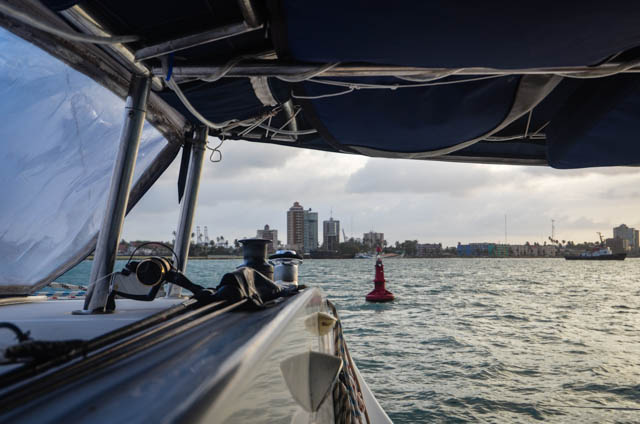
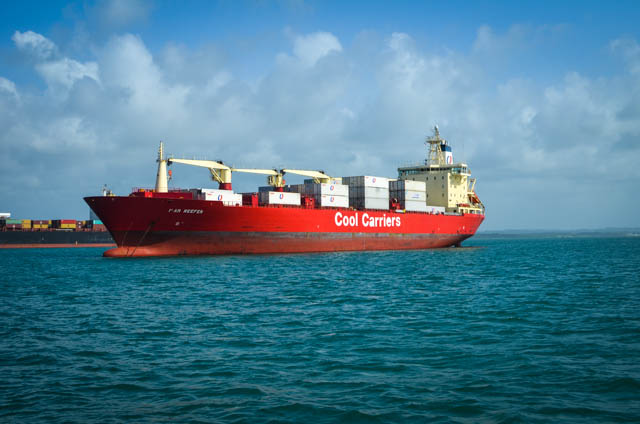
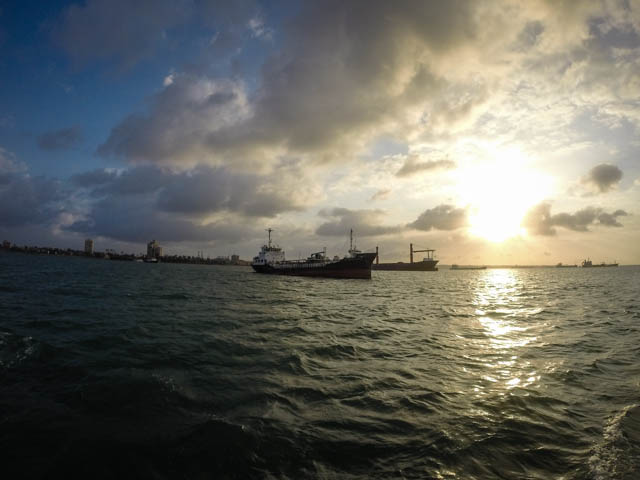
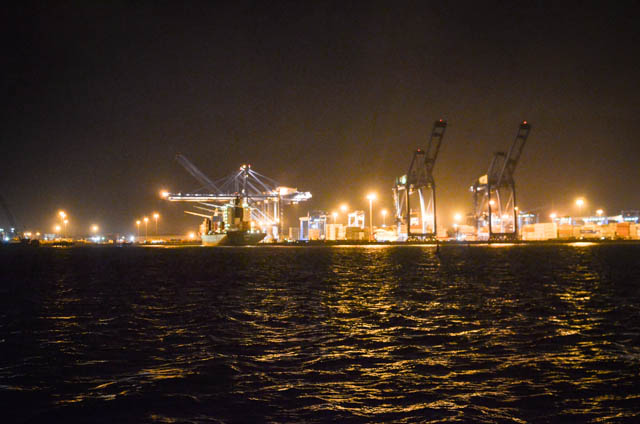
In order to go through the canal, a boat needs four line handers plus the captain, so we found some extra hands around town to help us out…
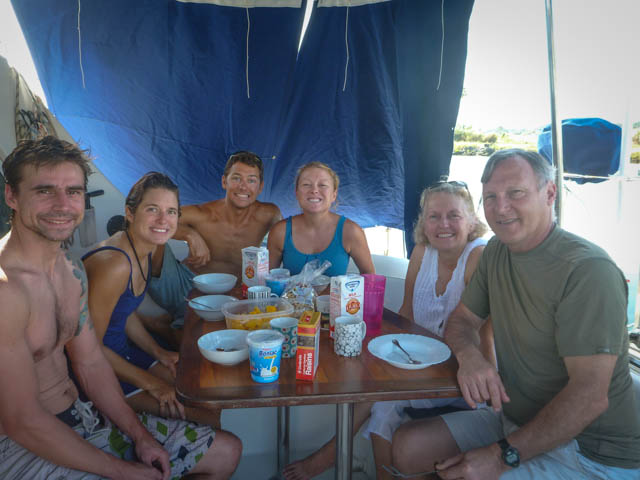
Felix (Liza’s hubby), and Jeanne and Denny (Pete’s Mom and step-Dad). Woo-hoo!
So, we waited out a few more days in the marina, did some last minute errands, and let our excitement grow as we waited out our scheduled day to hit the canal!


